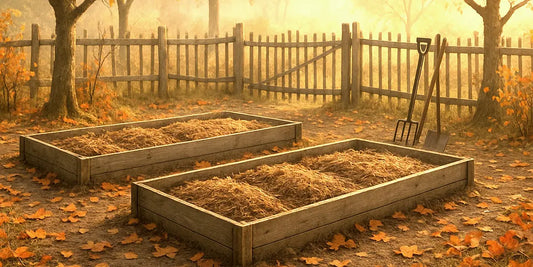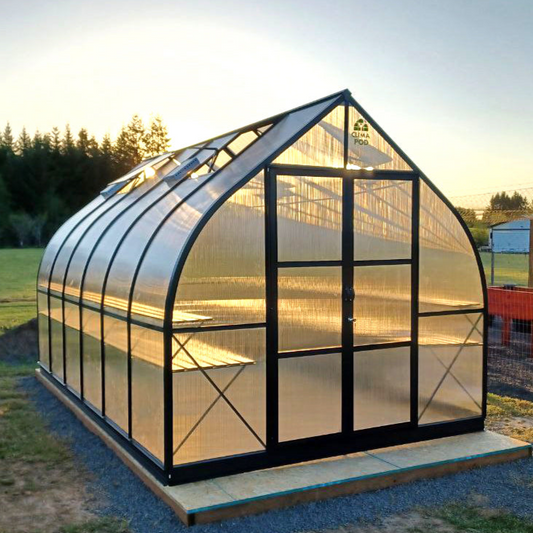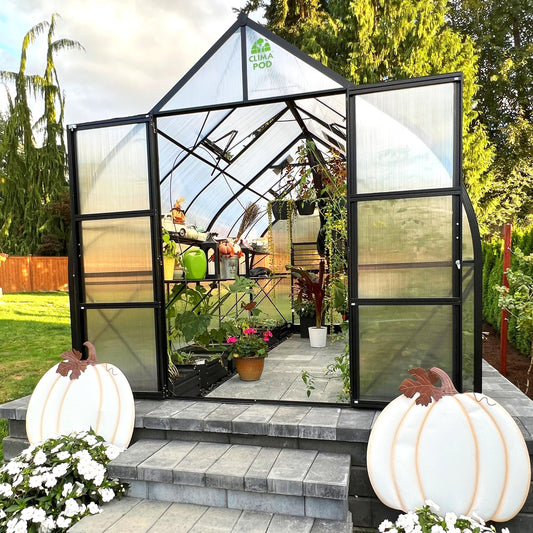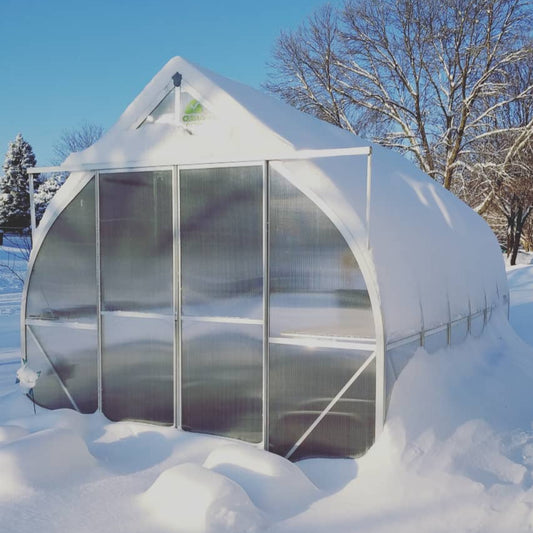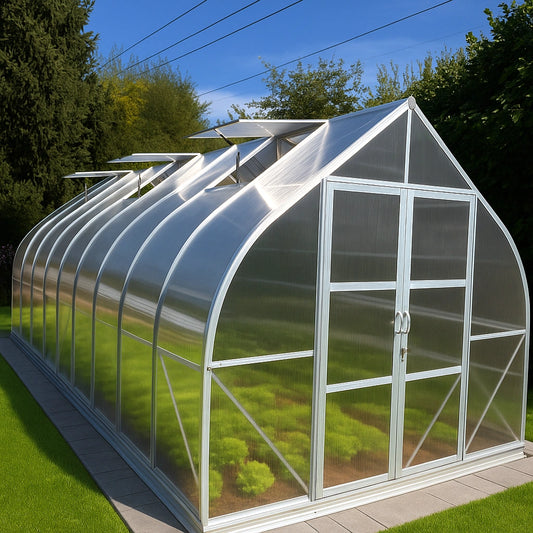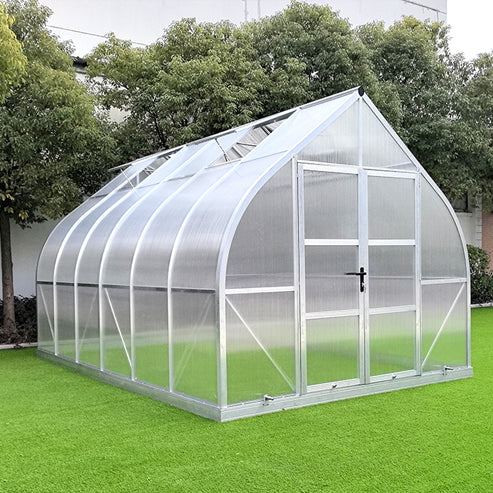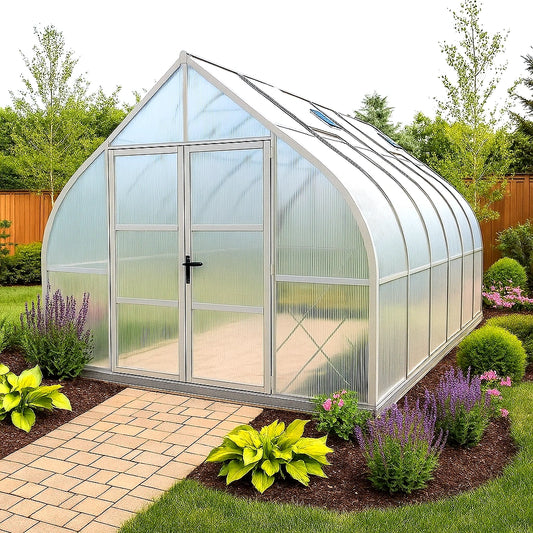
November Gardening Checklist: 30 Essential Tasks for Growers
As the growing season ends and temperatures drop, November is the time to finish up the last outdoor chores before winter sets in. This month’s tasks focus on cleanup, protection, and preparation — setting your garden, orchard, and greenhouse up for a strong start next spring.
Top 10 Garden Tasks in November

1. Inspect and clean up your orchard
Rake and remove fallen leaves and old fruit to reduce overwintering pests and disease. Prune damaged branches and burn infected plant debris. If temperatures remain above 43°F (6°C), whitewash tree trunks with a lime solution to prevent sunscald and bark cracking.
2. Protect tree bases and trunks
Apply a 6-inch layer of mulch, compost, or peat around tree bases to insulate roots. Young trees can be wrapped with burlap or evergreen boughs to prevent frost damage and rodent chewing.
3. Care for berry shrubs
Hill up soil or mulch around berry bushes like blueberries, raspberries, and currants. Prune old or unproductive canes, leaving only 8–10 strong young shoots. For remontant raspberries, cut all stems down to the ground to encourage strong spring growth.
4. Treat for pests and disease
Spray fruit trees with a 3% iron sulfate or copper solution to prevent scab and mildew. Apply only in calm weather and before temperatures drop below freezing.
5. Deep watering before frost
Perform a thorough deep watering (up to 2 feet deep) to help soil retain warmth and moisture through winter. Combine this with fall fertilizing using phosphorus and potassium-rich amendments.
6. Feed backyard birds
Hang bird feeders to attract overwintering birds like chickadees and nuthatches — natural pest controllers that will return in spring. Use safe foods like sunflower seeds, nuts, and suet.
7. Protect from rodents
Wrap tree bases with mesh or breathable fabric to prevent mice and voles from gnawing bark under snow cover.
8. Collect scion wood for grafting
Before hard frost, cut healthy scion wood from fruit trees and store it in a cool, damp place until spring grafting season.
9. Prepare future lawn areas
Clear debris and level soil in spots where you plan to plant grass next year. You can sow cool-season lawn seeds now for natural winter stratification.
10. Clean and store garden tools
Wash and disinfect tools, sharpen blades, and store them in a dry, ventilated space. Oil metal parts and handles for long-term protection.
Top 10 Vegetable Garden Tasks in November

1. Prepare the compost pile
Turn and moisten your compost heap before frost. Insulate with a 20-inch layer of leaves, straw, or soil to keep microbial activity going through early winter.
2. Sanitize and repair your greenhouse
After harvesting the final crops, clean greenhouse frames, shelves, and walkways with a mild bleach or soda solution. Replace broken panels and check seals before heavy snow.
3. Sort and store seeds
Dry and sort harvested seeds. Discard small or damaged ones. Store viable seeds in paper envelopes in a cool, dry place.
4. Gather soil for seed starting
Collect garden soil before it freezes. Mix it with compost, peat, and sand to prepare seed-starting mix for next spring.
5. Sow hardy vegetables
Direct-sow cold-tolerant crops like carrots, parsnips, beets, spinach, and garlic in late November. Cover with dry soil and mulch for protection.
6. Harvest remaining crops
Pick cold-tolerant vegetables such as Brussels sprouts, kale, and cabbage before heavy frost. Remove plant debris afterward to prevent overwintering pests.
7. Refresh greenhouse soil
Replace the top 2–3 inches of soil annually to prevent disease buildup. Rotate crops and add compost for improved structure and fertility.
8. Grow greens indoors
Plant green onions, garlic, or herbs in small containers indoors for fresh winter harvests. Windowsill or LED light setups work well.
9. Check stored produce
Inspect stored root crops and remove any showing rot or mold. Keep storage areas at 35–40°F with moderate humidity.
10. Keep rodents out of storage areas
Seal cracks and use traps or repellents in root cellars and sheds to keep mice and rats away from your produce.
Top 10 Flowerbed and Landscape Tasks in November

1. Bring potted plants indoors
Move tender perennials and tropicals indoors before frost. Place light-loving plants like succulents near south-facing windows, and shade-tolerant ones like ferns on cooler sills.
2. Protect roses
After the first steady frosts, cover rose bases with mulch and wrap with burlap or evergreen boughs. Avoid covering too early during temporary cold spells.
3. Cut back perennials
Finish cutting back plants like peonies, irises, and phlox. Use clean, sharp shears to prevent disease spread. Cover tender perennials with mulch or evergreen branches.
4. Sow cold-tolerant flowers
Plant hardy annuals and perennials such as calendula, delphinium, and lavender after the ground cools but before it freezes. Cover lightly with compost or peat.
5. Insulate bulb plantings
Mulch bulb beds (tulips, hyacinths, daffodils) with compost or pine needles. If bulbs have sprouted due to warm fall weather, cover with extra mulch and evergreen branches.
6. Deter mice naturally
Plant decorative allium or fritillaria near tulip beds to discourage rodents. After snowfall, pack snow over flowerbeds to keep mice out.
7. Store bulbs and tubers
Clean and dry dahlia tubers, gladiolus corms, and begonia bulbs. Store them in boxes with peat or sand in a cool, dry location.
8. Force bulbs for winter bloom
Start forcing hyacinths and daffodils indoors in late November for early spring blooms. Keep them in the dark and warm for a week, then move to light.
9. Cover young evergreens
Protect small conifers and newly planted shrubs from sunscald and winter burn by wrapping with breathable fabric or burlap. Avoid sealing tightly.
10. Clean and oil garden tools
Disinfect and dry your pruning tools. Apply oil or wax to metal surfaces to prevent rust during storage.
Once these November tasks are complete, your garden can rest — and so can you. Winter is coming, but your next successful growing season starts now.


